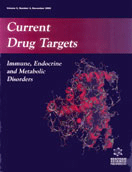Abstract
ATB0,+ is a unique amino acid transporter because of its broad substrate specificity and concentrative ability. This transporter recognizes neutral as well as cationic amino acids. It is energized by Na+ and Cl- gradients and membrane potential. Many of the amino acids and amino acid derivatives that are substrates for ATB0,+ serve as therapeutic agents (e.g., D-serine, carnitine, and nitric oxide synthase inhibitors). Recent studies have shown that the potential of ATB0,+ as a drug delivery system may be greater than previously envisaged. ATB0,+ can transport antiviral drugs such as acyclovir and ganciclovir when they are covalently coupled to the side chain of anionic amino acids. Chemical modification of the carboxyl groups in the side chain of aspartate and glutamate with drugs converts these anionic amino acids into neutral amino acid derivatives. Therefore, the modified drugs are recognized by ATB0,+. Interestingly, even when acyclovir and ganciclovir are coupled as esters with α-carboxyl group of neutral amino acids, the modified drugs are transported via ATB0,+. Similarly, the hydroxyl group in the side chains of serine and threonine can also be used to covalently couple drugs for delivery into cells via ATB0,+. This increases the potential for designing a wide variety of amino acid-based prodrugs that can utilize ATB0,+ as drug delivery system. Furthermore, the transporter is expressed in the colon, lung, and eye, the tissues easily amenable for drug delivery. These findings argue strongly in support of ATB0,+ as a potential delivery system for a wide variety of drugs and prodrugs.
Keywords: Amino acid derivatives, intracellular hydrolysis, intestinal tract, lung, conjunctiva, NOS inhibitors, neuromodulators, antiviral agents
 6
6


















